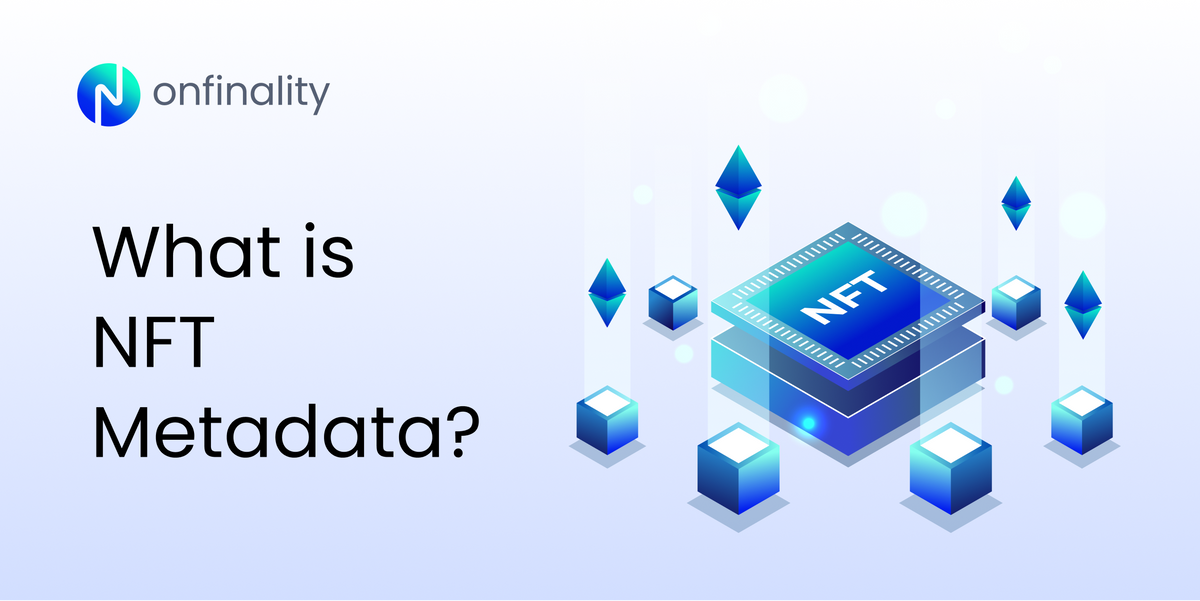What is NFT Metadata?
Discover the importance of the OnFinality Unified NFT API in helping blockchain developers retrieve NFT metadata seamlessly.

OnFinality is a blockchain infrastructure platform that saves web3 builders time and makes their lives easier. We deliver easy-to-use, reliable and scalable API endpoints for the biggest blockchain networks and empower developers to automatically test, deploy, scale and monitor their own blockchain nodes in minutes.
We recently launched our Unified NFT API, allowing for seamless access to NFTs and their metadata across the Polkadot and Kusama ecosystems. This means that you can now effortlessly retrieve NFTs and their related information from networks like Acala, Astar, Shiden, Moonbeam, and Moonriver!
In this article, we explain what NFT metadata is, and its purpose, so you can navigate the world of NFTs with confidence!
What is NFT Metadata?
At the core of every NFT lies its metadata, which plays a pivotal role in defining the essence and characteristics of the token.
Metadata can be thought of as the information attached to the NFT, providing crucial details about the asset it represents. This data can vary depending on the nature of the NFT, but typically includes relevant information such as the item's title, description, author/creator, date of creation, and any additional attributes that make the asset unique.
What is NFT Metadata used for?
The purpose of NFT metadata is multi-fold and is the key to unlocking the true potential of digital collectibles.
Proof-of-Authenticity
First and foremost, metadata acts as a digital certificate of authenticity. Since NFTs are often associated with digital art, music, videos, virtual real estate, and other digital assets, the metadata ensures that buyers and collectors can verify the provenance and legitimacy of the item. This proof of authenticity is critical in combating plagiarism and fraud in the world of NFTs.
Discoverability and Value Proposition
Metadata also plays a crucial role in enabling discoverability and organisation within NFT marketplaces and platforms. When users explore collections or browse through NFTs, they rely on the metadata to understand what each item represents and to determine its value and relevance to their interests.
The Importance of Understanding NFT Metadata
Whether you're an artist looking to tokenise your work, a collector seeking unique digital assets, or a blockchain developer interested in building NFT-powered applications, understanding NFT metadata is a crucial step toward unleashing the full potential of this transformative technology.
How to get Metadata from NFT?
As the NFT ecosystem continues to evolve and expand, developers and creators need standardised ways to handle metadata. This is where the OnFinality Unified NFT API comes into play. The OnFinality Unified NFT API offers a streamlined and consistent approach to interact with NFTs, making it easier for developers to access and manipulate metadata across various blockchain networks.
NFT Metadata Standards
To learn more about NFT Metadata Standards and how to use them, check out this explainer article featuring 3 common NFT Standards: ERC20, ERC721 and ERC1155.
Congratulations!
Now that you have a basic understanding of what NFT metadata is and its fundamental purpose, you are ready to venture into the exciting NFT universe and explore its endless possibilities!
Build Smarter with OnFinality. 😎
About OnFinality
OnFinality is a blockchain infrastructure platform that saves web3 builders time and makes their lives easier. OnFinality delivers scalable API endpoints for the biggest blockchain networks and empowers developers to automatically test, deploy, scale and monitor their own blockchain nodes in minutes. To date, OnFinality has served hundreds of billions of RPC requests, supports over 90 networks including Avalanche, BNB Chain, Cosmos, Polkadot, Ethereum, and Polygon, and is continuously expanding these mission-critical services so developers can build the decentralised future, faster!
